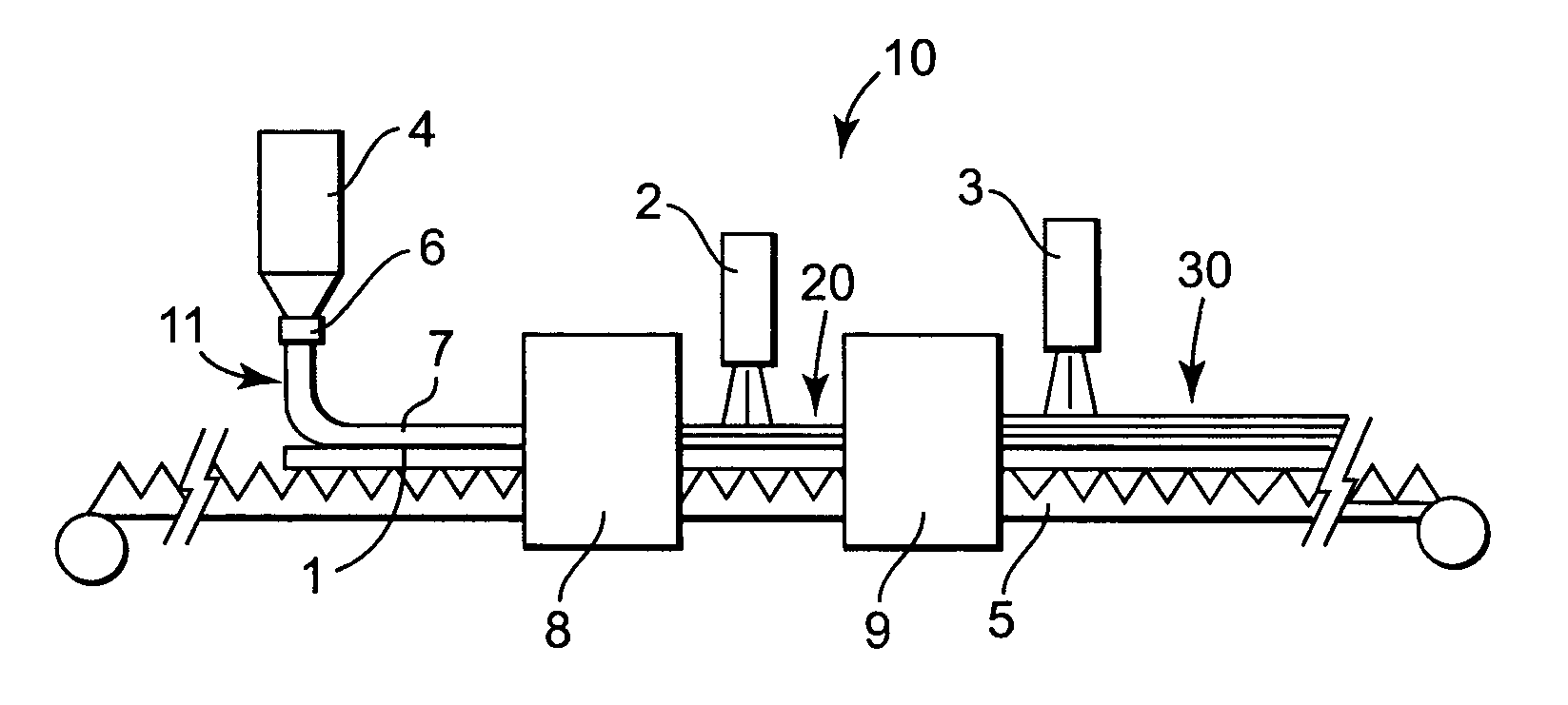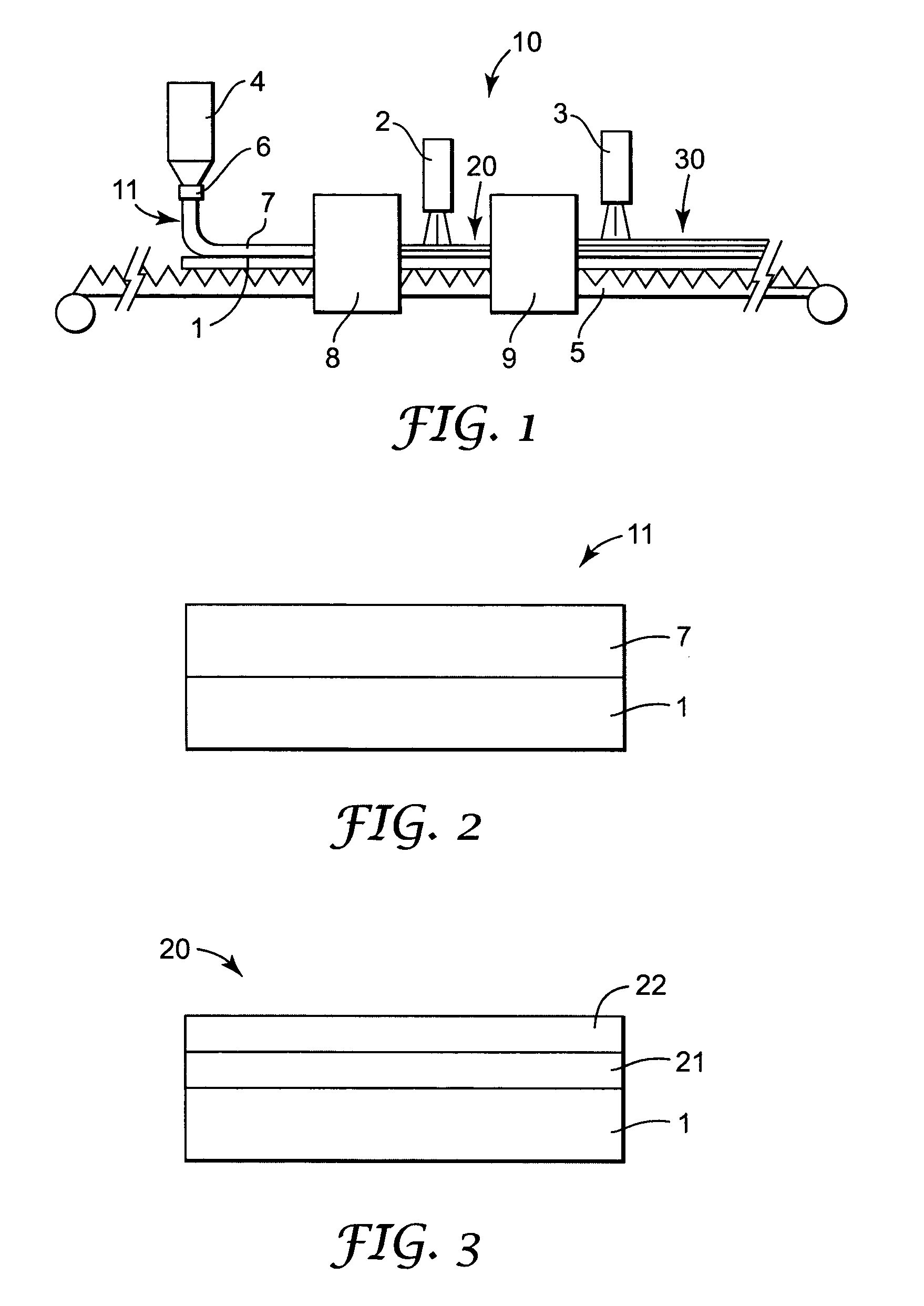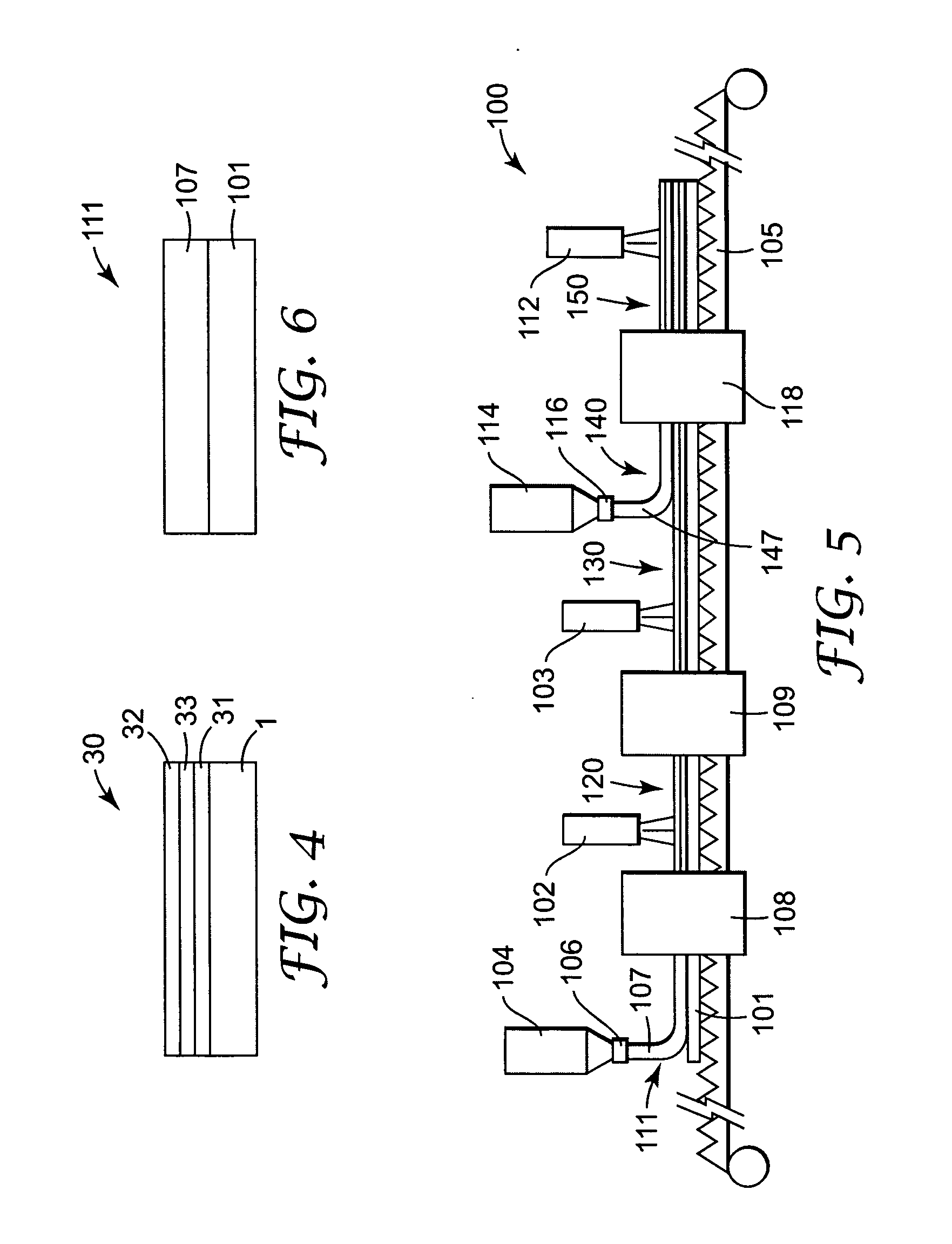Multilayer cholesteric liquid crystal optical bodies and methods of manufacture and use
a liquid crystal optical body and liquid crystal technology, applied in the field of optical bodies, can solve the problems of low transmission or reflectance of these displays, reducing display contrast and brightness, and requiring high power consumption
- Summary
- Abstract
- Description
- Claims
- Application Information
AI Technical Summary
Benefits of technology
Problems solved by technology
Method used
Image
Examples
example 1
[0121] A first portion of the coating solution (Solution A) was prepared for the coating procedure as follows. 21 grams of cyanobiphenyl benzoate ethyl acrylate (see below) was polymerized with 1.5 grams of LC 756 (a chiral liquid crystal monomer commercially available from BASF) in 77 grams of dioxolane (commercially available from Aldrich Chemical Co., Milwaukee, Wis.) using 0.75 grams of Vazo 52 (commercially available from Dupont, Wilmington, Del.) as a thermal initiator and 0.25 grams of carbon tetrabromide (commercially available from Aldrich Chemical Co., Milwaukee, Wis.) as a chain transfer additive. This reaction was run for 16 hours at 60° C.
[0122] A second portion of the coating solution (Solution B) was prepared for the coating procedure as follows. 3.8 grams of LC 252 (a nematic liquid crystal monomer commercially available from BASF) was polymerized in 95 grams of dioxolane using 1.2 grams of Vazo 52 and 0.05 grams of BHT (2,6 di-tert-butyl-4-methylphenol commercially...
example 2
[0129] A portion of the coating solution (Solution A) was prepared for the coating procedure as follows. 22.5 grams of cyanobiphenyl benzoate ethyl acrylate was polymerized with 2.3 grams of LC 756 in 74.4 grams of dioxolane using 0.8 grams of Vazo 52 as a thermal initiator. This reaction was run for 16 hours at 60° C.
[0130] The coating solution was formed by combining 27.4 grams of Solution A, 0.6 grams of LC 756, 13.7 grams of LC 242, 0.25 grams of phenyl ethyl acrylate, 0.097 grams of BHT, 3.4 grams of cyanobiphenyl 4-methoxybenzoate, and 10 grams of cyclohexanone and 44.7 grams of dioxolane. The solution was heated at 90° C. for 2 minutes. During this heating period a minor portion of the LC242 and LC756 react to form a copolymer.
[0131] This solution was coated on a 100 micrometer PET substrate (commercially available as Scotchpar from 3M, St. Paul, Minn.) using a wire round rod to produce a 6 micrometer thick dried coating. The coating was air dried 30 seconds at room tempera...
example 3
[0132] A first portion of the coating solution (Solution A) was prepared for the coating procedure as follows. 26.4 grams of cyanobiphenyl benzoate ethyl acrylate was polymerized with 0.88 grams of LC 756 in 71.5 grams of dioxolane using 1.0 grams of Vazo 52 as a thermal initiator. This reaction was run for 16 hours at 60° C.
[0133] A second portion of the coating solution (Solution B) was prepared for the coating procedure as follows. 4.0 grams of LC 252 was polymerized in 94.7 grams of dioxolane using 1.29 grams of Vazo 52 and 0.004 grams of BHT (2,6 di-tert-butyl-4-methylphenol). This reaction was run at 80° C. for 1 hour.
[0134] The coating solution was formed by combining 22.3 grams of Solution A, 21.6 grams of Solution B, 0.28 grams of LC 756, 8.0 grams of LC 242, 0.45 grams of benzyl alcohol (commercially available from Aldrich Chemical Co., Milwaukee, Wis.), 0.15 grams of BHT, 3.76 grams of cyanobiphenyl 4-methoxybenzoate, and 4.8 grams of cyclohexanone and 37 grams of dioxo...
PUM
| Property | Measurement | Unit |
|---|---|---|
| reflectivity | aaaaa | aaaaa |
| distance | aaaaa | aaaaa |
| full width at half peak height | aaaaa | aaaaa |
Abstract
Description
Claims
Application Information
 Login to View More
Login to View More - R&D
- Intellectual Property
- Life Sciences
- Materials
- Tech Scout
- Unparalleled Data Quality
- Higher Quality Content
- 60% Fewer Hallucinations
Browse by: Latest US Patents, China's latest patents, Technical Efficacy Thesaurus, Application Domain, Technology Topic, Popular Technical Reports.
© 2025 PatSnap. All rights reserved.Legal|Privacy policy|Modern Slavery Act Transparency Statement|Sitemap|About US| Contact US: help@patsnap.com



